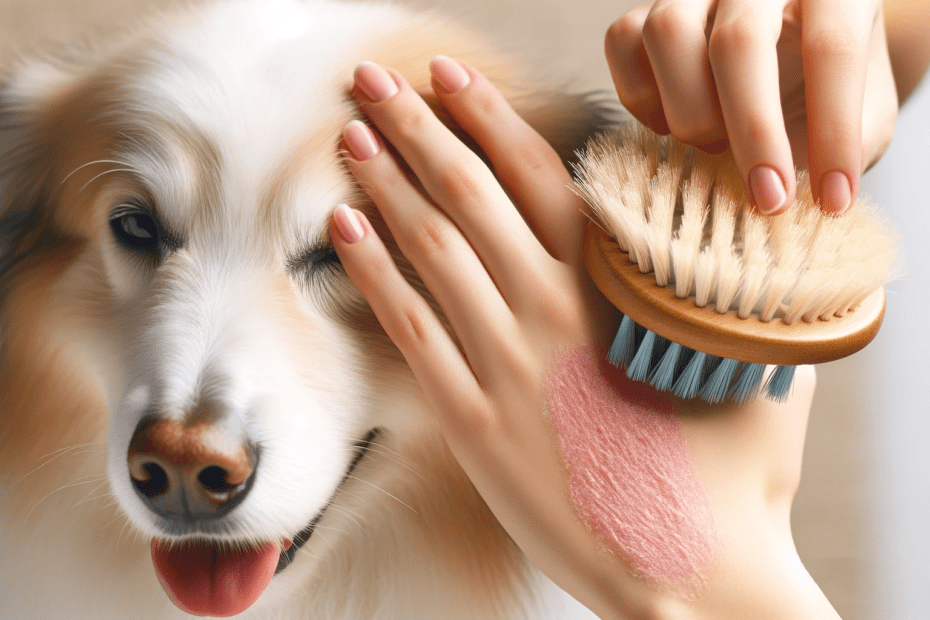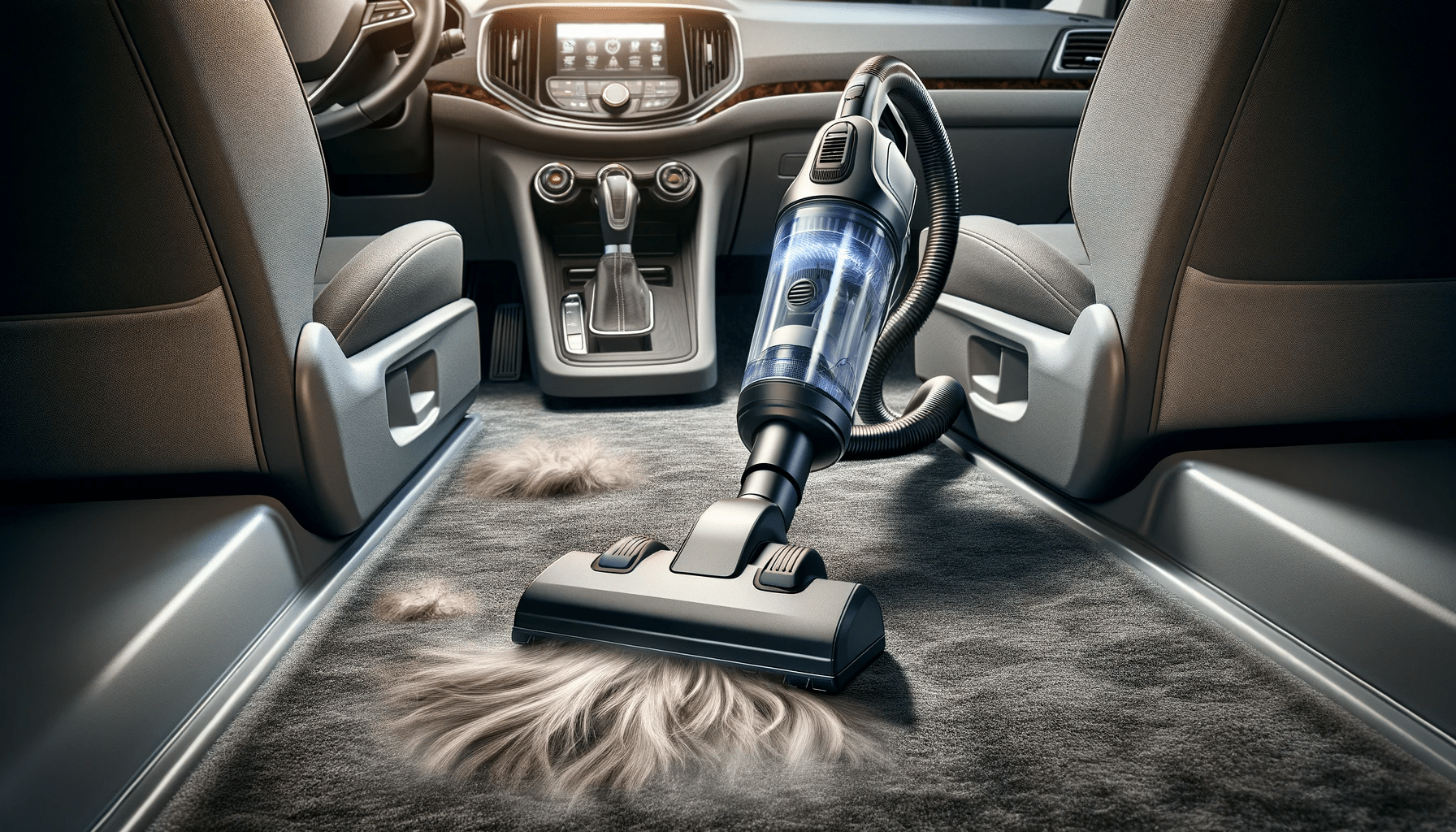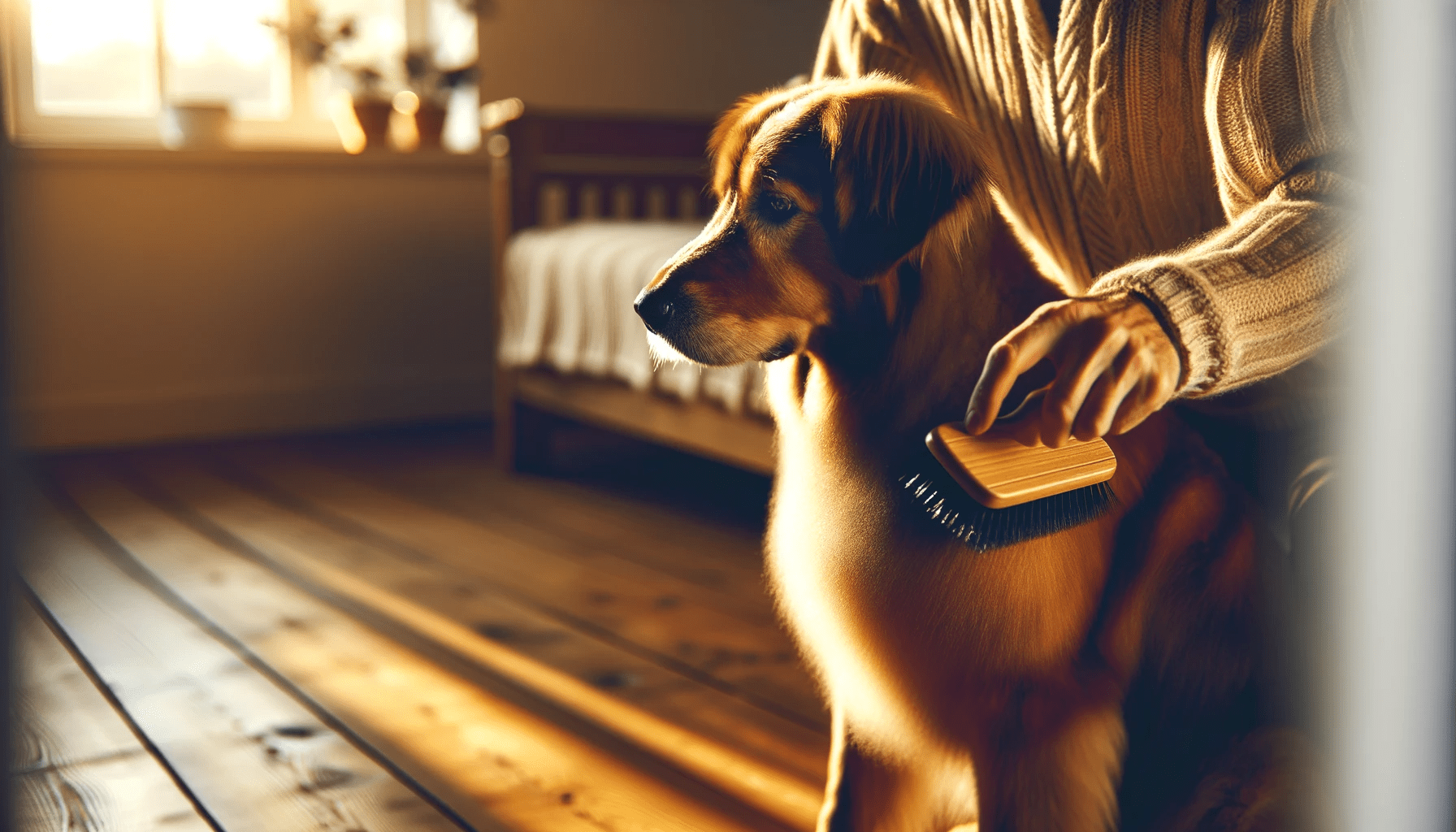Are you struggling to keep your pup's sensitive skin healthy and clean?
Look no further! In this article, we will provide you with expert grooming tips specifically tailored for dogs with sensitive skin.
From establishing a proper bath time routine to choosing the right shampoo, we've got you covered.
Learn the best brushing techniques, nail trimming methods, and ways to deal with ear and eye sensitivity.
Plus, we'll share tips for managing allergies and skin irritations.
Get ready to pamper your furry friend!
Key Takeaways
- Establish a regular bath time routine using gentle, hypoallergenic shampoos.
- Use grooming tools with soft bristles or rubber tips to avoid irritating sensitive skin.
- Regularly clean and moisturize your dog's coat and skin.
- Identify and eliminate potential food triggers from your dog's diet.
Proper Bath Time Routine
To ensure the best care for your dog with sensitive skin, it's important to establish a regular bath time routine using gentle, hypoallergenic shampoos. Choosing the right grooming tools is crucial when it comes to maintaining the health and comfort of your furry friend. Opt for brushes with soft bristles or rubber tips to avoid irritating their sensitive skin. Additionally, consider using a grooming glove to remove loose hair and massage their skin gently. These tools will help prevent any unnecessary discomfort or irritation during the grooming process.
When it comes to drying techniques for sensitive skin, it's best to use a soft towel or a low-heat blow dryer. Pat your dog's skin dry instead of rubbing vigorously, as this can cause further irritation. Avoid using high-heat settings on blow dryers, as they can dry out the skin and worsen any existing skin conditions. It's also essential to thoroughly dry the folds and creases of their skin to prevent moisture buildup, which can lead to infections.
Choosing the Right Shampoo
When selecting shampoo for your dog with sensitive skin, it's important to consider their specific needs and opt for a gentle, hypoallergenic formula. Dogs with sensitive skin are prone to itching, redness, and irritation, so choosing the right shampoo can make a significant difference in their comfort and overall skin health.
Look for shampoos that are specifically labeled as hypoallergenic, as these are formulated to minimize the risk of triggering allergic reactions. Avoid shampoos that contain artificial fragrances, dyes, or harsh chemicals, as these can further irritate sensitive skin.
In addition to choosing a gentle shampoo, it's also crucial to consider the frequency of bathing. While regular bathing is essential for maintaining your dog's hygiene, excessive bathing can strip their skin of natural oils and exacerbate sensitivity.
For dogs with sensitive skin, it's generally recommended to bathe them no more than once every two to four weeks. However, this frequency may vary depending on your dog's specific needs and the severity of their skin condition. Consulting with your veterinarian can help determine the ideal bathing frequency for your furry friend.
Brushing Techniques for Sensitive Skin
Are you wondering how to brush your dog with sensitive skin effectively? It's important to approach brushing with caution and care to prevent any irritation or discomfort.
Here are some gentle brushing techniques for sensitive skin care:
- Use a soft-bristled brush: Opt for a brush with soft bristles to avoid any scratching or scraping on your dog's sensitive skin. Hard or stiff bristles can cause irritation and redness.
- Brush in the direction of hair growth: Always brush in the same direction as your dog's hair growth to prevent tugging or pulling. This will help minimize any discomfort and keep your dog's skin healthy.
- Take it slow and be gentle: Be patient and gentle while brushing your dog's sensitive skin. Use slow, gentle strokes to avoid any unnecessary friction or irritation. If you encounter any tangles or knots, carefully work through them with your fingers or a wide-toothed comb.
By following these gentle brushing techniques, you can ensure that your dog's sensitive skin is well taken care of during grooming sessions. Remember to observe your dog's reactions and adjust your brushing technique accordingly.
Regular and gentle brushing won't only keep your dog's skin healthy but also strengthen your bond with your furry friend.
Trimming Nails and Paw Care
When it comes to trimming your dog's nails and caring for their paws, there are a few important points to keep in mind.
First, maintaining the proper length of your dog's nails is crucial for their overall health and comfort. Regular trimming helps prevent issues like ingrown nails and pain while walking.
Additionally, protecting your dog's paw pads is essential, especially if they have sensitive skin. This can be done by avoiding hot pavement or cold surfaces and using paw balms or booties to provide a protective barrier.
Finally, using the right trimming techniques is important to make the experience more comfortable for both you and your furry friend. Using a sharp, guillotine-style nail trimmer can help ensure a clean cut. It's also important to take breaks if your dog becomes stressed and reward them with treats and praise for good behavior.
Nail Length and Health
To ensure the nail length and health of your dog with sensitive skin, it's important to regularly trim their nails and provide proper paw care. Neglected nails can lead to discomfort and potential health issues, so it's crucial to prioritize this aspect of grooming. Here are three key tips to help you maintain your dog's nail health:
- Regular nail trimming: Trim your dog's nails every 2-4 weeks, depending on their growth rate. Use a high-quality nail clipper designed specifically for dogs and be cautious not to cut into the quick, which can cause bleeding and pain.
- Proper technique: Hold your dog's paw firmly but gently, and trim small amounts of the nail at a time. Take breaks if your dog becomes stressed or anxious, and reward them with treats and praise to make the experience positive.
- Paw care: Regularly inspect your dog's paws for any signs of injury, irritation, or infection. Clean their paws after walks to remove debris and apply a dog-friendly moisturizer to keep the paw pads healthy and supple.
Paw Pad Protection
Regularly trimming your dog's nails and providing proper paw care is essential for protecting their sensitive paw pads.
Paw pads are prone to dryness and cracking, especially in dogs with sensitive skin. To prevent this, it's important to moisturize the paw pads regularly. Use a paw pad moisturizer specifically designed for dogs and apply it gently to the pads. This will help keep the paw pads soft and supple, reducing the risk of cracking and discomfort.
In addition to moisturization, trimming your dog's nails regularly is essential for paw pad protection. Long nails can cause your dog to walk unnaturally, leading to uneven pressure on the paw pads. This can result in soreness and pain. Furthermore, long nails can get caught on surfaces, increasing the risk of injury. By keeping your dog's nails trimmed, you aren't only ensuring their comfort but also protecting against hot surfaces, as longer nails can act as heat conductors.
Regular nail trimming and paw pad care are simple yet effective ways to keep your dog's paws healthy and protected.
Trimming Techniques for Comfort
Keep your dog's nails and paw pads comfortable by using gentle trimming techniques. It's important to make grooming a stress-free experience for your furry friend.
Here are some tips to help you achieve comfortable and stress-free grooming:
- Use the right tools: Invest in a good quality nail trimmer specifically designed for dogs. This will ensure a clean cut without causing any discomfort to your dog's nails.
- Take it slow: Start by getting your dog accustomed to having their paws handled. Gently touch and massage their paws to desensitize them. Gradually introduce the nail trimmer and trim a small amount of the nail at a time to avoid cutting the quick.
- Reward and praise: Positive reinforcement goes a long way in making grooming a positive experience. Reward your dog with treats and praise after each successful nail trim to encourage good behavior.
Dealing With Ear and Eye Sensitivity
When it comes to dealing with ear and eye sensitivity in dogs with sensitive skin, prevention is key.
Regularly cleaning your dog's ears can help prevent ear infections, which are common in dogs with sensitive skin.
Additionally, soothing any eye irritation and using gentle cleaning techniques can help keep your dog's eyes healthy and comfortable.
Prevention of Ear Infections
To effectively prevent ear infections in dogs with sensitive skin, it's important that you regularly clean your dog's ears and eyes using gentle products specifically designed for pets. Here are three important steps to follow:
- Use a gentle ear cleaning solution:
Choose an ear cleaning solution that's specifically formulated for dogs with sensitive skin. Avoid products that contain harsh chemicals or fragrances, as they can irritate your dog's delicate ears.
- Clean your dog's ears regularly:
Dogs with sensitive skin are more prone to ear infections, so it's crucial to clean their ears at least once a week. Gently lift the ear flap and apply the cleaning solution, then massage the base of the ear to loosen any debris. Use a soft, clean cloth to wipe away the dirt and excess solution.
- Be gentle when cleaning the eyes:
Use a pet-safe eye cleaning solution and a soft, clean cloth to gently wipe away any discharge or debris from your dog's eyes. Be careful not to apply too much pressure or use rough materials, as this can cause further irritation.
Soothing Eye Irritation
If your dog experiences ear and eye sensitivity, you'll need to address the issue by providing soothing relief and gentle care.
When it comes to soothing eye irritation, there are a few options you can consider.
One option is using eye drops specifically formulated for dogs with sensitive eyes. These eye drops can help to moisturize and soothe your dog's eyes, reducing any redness or irritation.
Another option is to try natural remedies, such as using a chamomile tea rinse or a saline solution to gently clean your dog's eyes. These natural remedies can help to alleviate any discomfort and promote healing.
It's important to consult your veterinarian before using any eye drops or natural remedies to ensure they're safe and appropriate for your dog's specific condition.
Gentle Cleaning Techniques
How can you effectively clean your dog's ears and eyes if they're sensitive? It's essential to use gentle cleaning techniques to minimize any discomfort or irritation. Here are some tips to help you clean your dog's ears and eyes with care:
- Ears
- Use a veterinarian-approved ear cleaner that's specifically formulated for sensitive ears.
- Gently lift your dog's ear flap and apply a few drops of the cleaner into the ear canal.
- Massage the base of the ear to distribute the cleaner and loosen any debris.
- Eyes
- Use a soft, clean cloth or a veterinarian-recommended eye wipe to gently clean around your dog's eyes.
- Wet the cloth with warm water or a saline solution to avoid any stinging sensation.
- Gently wipe away any discharge or debris from the corners of the eyes, working from the inside out.
Tips for Managing Allergies and Skin Irritations
Managing allergies and skin irritations involves regularly cleaning and moisturizing your dog's coat and skin. When it comes to managing food allergies, it's important to identify and eliminate any potential triggers from your dog's diet. Work closely with your veterinarian to develop an elimination diet or try a hypoallergenic dog food that's specifically formulated for dogs with sensitive skin.
Additionally, using natural remedies for skin irritations can help soothe your dog's skin and provide relief from itching and inflammation. Aloe vera gel can be applied topically to reduce redness and promote healing. Oatmeal baths can also be effective in soothing irritated skin. Simply grind oatmeal into a fine powder and mix it with warm water to create a soothing paste. Apply the paste to your dog's skin, leave it on for a few minutes, and then rinse thoroughly.
It's important to avoid using any harsh chemicals or fragrances on your dog's skin, as these can further irritate and dry out the skin. Instead, opt for gentle and hypoallergenic grooming products that are specifically designed for dogs with sensitive skin.
Frequently Asked Questions
Can I Use Any Shampoo on My Dog With Sensitive Skin?
You shouldn't use any shampoo on your dog with sensitive skin. It's important to choose dog shampoo options specifically designed for sensitive skin or use natural remedies that won't cause irritation or discomfort.
How Often Should I Bathe My Dog With Sensitive Skin?
To keep your dog with sensitive skin healthy, it's important to bathe them regularly. The frequency depends on factors like their activity level and skin condition. Natural remedies like oatmeal baths can soothe their skin.
Are There Specific Brushes or Grooming Tools Recommended for Dogs With Sensitive Skin?
When choosing grooming tools for dogs with sensitive skin, it's important to consider their specific needs. Understanding the different types of brushes and products available will help you make the right choices.
What Is the Best Way to Trim My Dog's Nails Without Causing Discomfort or Injury?
To trim your dog's nails without causing discomfort or injury, start by using proper trimming techniques. Make sure to use nail care products like clippers or grinders that are specifically designed for dogs.
How Can I Safely Clean My Dog's Ears and Eyes if They Are Sensitive?
To safely clean your dog's sensitive ears and eyes, use gentle, non-irritating solutions specifically designed for pets. Avoid using any harsh or fragrant products that could cause discomfort. Be careful and patient during the process.
Conclusion
In conclusion, by following these effective grooming tips for dogs with sensitive skin, you can ensure that your furry friend stays clean, healthy, and comfortable.
By establishing a proper bath time routine, using the right shampoo, and employing gentle brushing techniques, you can prevent skin irritations and allergies.
Additionally, regular nail trimming and paw care, as well as addressing any ear and eye sensitivities, will contribute to your dog's overall well-being.
Remember, it's important to consult with a veterinarian if you notice any persistent skin issues or allergies that require professional attention.






